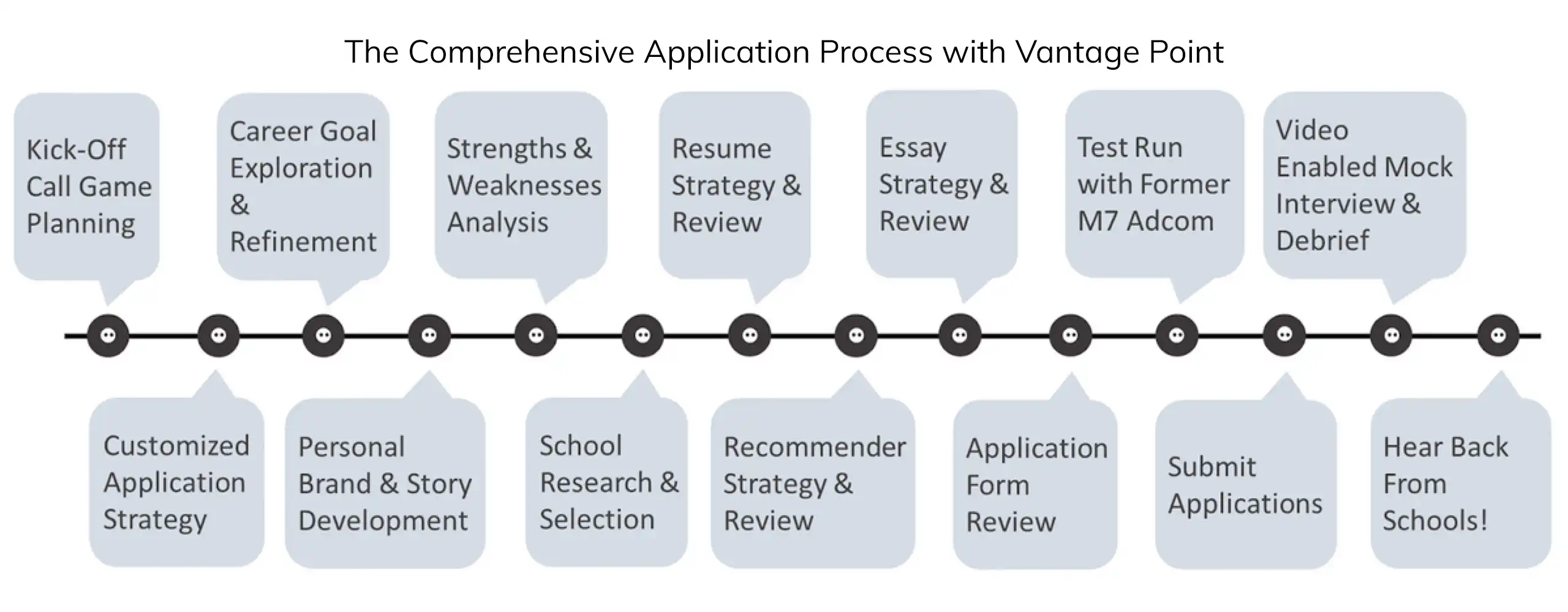The Consortium: Member Schools, Fellowship, Application & Fees

Are you familiar with The Consortium, including their MBA member school and The Consortium fellowship fellow program? If not, you should be! Formally known as The Consortium for Graduate Study in Management (CGSM). This amazing nonprofit’s mission is to “enhance diversity and inclusion in global business education and leadership”, which is something we can all rally behind. To operationalize this mission, The Consortium seeks to provide a smoother path towards a top tier MBA and sought-after post-MBA career opportunities for those who have dedicated their lives to inclusion.
Tactically speaking, The Consortium allows qualifying individuals (we’ll get to this in a second) to apply to its member MBA programs using one common application, saving time and money. The Consortium then provides merit-based full ride scholarships to roughly 70% (!!) of those who are granted admission to their program AND to at least one MBA program. Last but not least, members are invited to attend an annual conference where they meet with the organization’s corporate partners and often walk away with multiple internship offers in hand. In our experience, MBA programs may give preference to Consortium applicants given the recruiting support they receive at the annual conference (after all, employability is key for business schools).
The Consortium: Who Can Apply?
You are eligible to apply for Consortium MBA membership if you meet the following criteria:
- U.S. citizen, U.S. permanent resident or DACA recipient of any race or ethnicity*
- Demonstrate a commitment to The Consortium’s mission of helping to reduce the serious underrepresentation of African Americans, Hispanic Americans and Native Americans in both our member schools’ enrollments and the ranks of management
- Hold a four-year bachelor’s degree from an accredited college or university in the U.S. or an equivalent degree from a college or university outside the U.S. upon matriculation. If you are applying without a bachelor’s degree, you will be asked to provide your anticipated graduation date within the application**
*The Consortium accepts Deferred Action for Childhood Arrivals (DACA) students as members and does not discriminate on the basis of one’s citizenship status when evaluating applications to the Consortium. However, not all of the Consortium’s member schools accept DACA students and you should review your programs’ policies regarding acceptance.
**Not all Consortium member schools accept applicants who have not received their undergraduate degree at the time of submitting their application. You should review your programs’ policies regarding acceptance. A Consortium membership offer does not guarantee admission to a Consortium member school.
To be considered for membership in The Consortium (which then entitles you to the benefits described above), you must make the case for your fit with its mission through an application essay and one letter of recommendation.
So, what are some examples of candidates who have been accepted as Consortium MBAs? A past client of ours is a Hispanic American who worked in the nonprofit education sector pre-MBA and plans to stay in the nonprofit field after graduating from business school. The Consortium website highlights other members including a Nigerian immigrant who founded a company that promotes accessible investing. There are a wide variety of profiles that can fit and as noted in the criteria, people of any race or ethnicity will be considered.
The Consortium: Which Schools are Members?
One of the hallmarks of applying to business school through The Consortium is the ability to apply to any number of the Consortium member schools with one common application. Note, however, that this does NOT get you out of writing individual essays for each school – a common misconception. You still must complete each school’s required essays as well as an additional essay for Consortium applicants that will be shared with the schools.
On top of that, you must apply to The Consortium itself, which requires an essay and an additional recommendation (these items are not shared with the Consortium member schools).
Which schools are Consortium members, you may wonder? The comprehensive list is below, but it includes many of the top U.S. programs. The most recent additions are Chicago Booth and Duke Fuqua, which joined the fold with this application cycle (2024-2025).
The 21 Consortium MBA programs are as follows:
- University of California, Berkeley, Haas School of Business
- University of California, Los Angeles, Anderson School of Management
- Carnegie Mellon University, Tepper School of Business
- Columbia University, Columbia Business School
- Cornell University, Samuel Curtis Johnson Graduate School of Management
- Dartmouth College, Tuck School of Business
- Duke University, Fuqua School of Business
- Emory University, Goizueta Business School
- Georgetown University, McDonough School of Business
- Indiana University-Bloomington, Kelley School of Business
- University of Michigan-Ann Arbor, Ross School of Business
- New York University, Stern School of Business
- UNC Chapel Hill, Kenan-Flagler Business School
- Rice University, Jones Graduate School of Business
- Stanford Graduate School of Business
- University of Rochester, Simon Business School
- USC, Marshall School of Business
- Washington University in St. Louis, Olin Business School
- University of Washington, Foster School of Business
- University of Wisconsin-Madison, Wisconsin School of Business
- Yale University, Yale School of Management
As you can see, this is an incredible list of programs and there are a range of options from geographic and competitiveness standpoints. It also bears noting that, just because you apply to some programs through The Consortium, it does not mean you cannot apply to others the ‘traditional’ way. So not to fear if your dream school is somehow not on this list.
The Application Process
The next topic we’ll cover is how exactly the Consortium MBA application process works and then talk about the Consortium fellowship program, as it tends to confuse people in our experience.
From a timing standpoint, there are two deadlines for Consortium MBA applications, an ‘early’ deadline in mid-October and a ‘traditional’ deadline in early January. Regardless of when schools’ individual deadlines are, if you are applying through The Consortium one of these dates are when your applications are due.
To apply through The Consortium, instead of creating a profile on each individual school’s website, you create one centralized profile on The Consortium website. Through this portal, you submit all materials required by The Consortium and all supplemental materials required by each school to which you are applying (including but not limited to their school-specific essays).
Materials required by The Consortium that WILL be shared with each school (and upon which they will base their admissions decisions) include:
- GMAT / GRE score report
- Transcript(s)
- Two professional recommendations
- Core Essay 1: Please describe your short- and long-term goals post-MBA. How has your professional experience shaped these goals and influenced your decision to pursue an MBA degree? (2,000 characters)
- (Optional) Core Essay 2: Is there any other information you would like to share with us that is not presented elsewhere in your application? (1,000 characters)
- School specific essays for each school to which you are applying
Materials required by The Consortium that WILL NOT be shared with each school (they are used to assess whether you should be granted Consortium MBA membership) include:
- Mission Essay 1: What have you done pre-MBA in your business, personal, or academic life to demonstrate commitment to [The Consortium] mission? (2,000 characters)
- Mission Essay 2: What will you do while enrolled in your MBA program to demonstrate your commitment to the mission? (2,000 characters)
- Mission Essay 3: What will you do post-MBA with respect to community service and leadership involvement to demonstrate your continued commitment to The Consortium’s missions of diversity and inclusion? (1,000 characters)
- Recommendation letter in support of your adherence to the Consortium MBA mission
To finalize your application, you must also pay a tiered fee based on the number of programs to which you are applying. This ranges from $150 for 1-2 schools up to $300 for 6 schools. Considering application fees for each school when applying the ‘traditional’ way can be $200-300 dollars (per school!), this can end up saving you over $1000.
Consortium Application Fees
- 1-2 schools $150
- 3 schools $200
- 4 schools $240
- 5 schools $275
- 6 schools $300
- $25 for each additional program
The Consortium does not grant application fee waivers or refunds.
Admissions Decisions and Consortium Fellowship Opportunity
So, what comes next, you may ask. Well, a few things. First and foremost, each individual Consortium member school to which you’ve applied evaluates your candidacy and decides whether they want to admit you (and many will have an interview component that comes before their final decision). At the same time, The Consortium assesses whether your experiences and accomplishments make you a good fit for Consortium membership. You can be accepted to Consortium member schools and NOT The Consortium itself. For reference, roughly 1100 people apply for Consortium membership each year and around 500 are accepted. It goes without saying that you should honestly assess your fit with The Consortium’s mission before applying to business school via this avenue.
Once you’ve been admitted to at least one member school AND been granted Consortium membership, you become eligible for a full-tuition Consortium Fellowship. When you submit your applications, you rank order the schools to which you’ve applied. Schools don’t see this ranking until they release their admissions decisions! If you’re admitted to your first-choice school, they have the option of granting you the Consortium fellowship. If they pass, the option moves to your second-choice school and so on. It ultimately works out that 400 of 500 new Consortium members are offered a full tuition fellowship each year. Those are GREAT odds.
Regardless of whether you end up with a Consortium fellowship, Consortium MBAs attend the annual Orientation Program (‘the OP’) where they meet with corporate partners (Apple, BCG, Google, Starbucks, just to name a few) and, as noted earlier, often walk away with multiple internship offers for the following summer. This all happens in June before they are even on campus! Imagine how nice it would be to walk into school the first day and already have your internship locked up. Not to mention that the OP is a great opportunity to network with likeminded peers who will start school with you in the fall and people from other programs.
The Bottom Line
If you are passionate about diversity and inclusion and can prove as much based upon your past experiences and accomplishments, applying to business school through The Consortium is a very good option (we would even go so far as to call it a no brainer). There are a few additional hoops to jump through, but the payoff can be huge.
If you couldn’t tell, we are huge fans of The Consortium and its mission. We also have experience guiding candidates through this unique application process. If we can be of assistance to you, please don’t hesitate to reach out!





Pingback: Is the Consortium Right for You?
December 4, 2024 7:48 pm